The Suunto 9 Peak Pro is both a modest update and a major update, depending on how you look at it. Internally, the Suunto 9 Peak Pro is substantially different – with almost everything revamped: Processor, GPS chipset, heart rate sensor, and memory. Even the user interface and software. In other words, all the things that matter. However externally, it basically looks the same as the previous Suunto 9 Peak. Tied with this internal revamp are further extended 3rd party integration options, and expanded ‘app store’ capabilities.
However, while the above is a good list to start from, it’s tricky in that it still falls short of the multiband GNSS chipsets that many (if not most) watch models above $400 are putting in these days, especially for companies’ flagship units (this one priced at $549). Same goes for mapping. Additionally, Suunto skipped on significantly revamping the often hard-to-read display, something that many had identified as probably the most critical element needing a refresh.
Yet then, out of left field comes the Suunto 9 Peak Pro’s ability to track shallow-water snorkeling and diving – down to a depth of 10 meters. Not enough for scuba purposes, or even most free diving – but enough for tracking most snorkeling dives, and just those wanting to have a bit of fun. It’s something unseen in endurance sports watches, short of the high-end Apple Watch Ultra’s dive capabilities they announced a month earlier.
And thus arrives probably one of the more intriguing reviews I’ll have written in a while. Can Suunto find a way to thread the needle enough to have their new features, combined with existing platform power, make up for the lack of other features normally seen at this price point? Well, let’s dig in.
As usual, this watch is a media loaner, and it’ll go back to Suunto. This review is not sponsored (nor does any company get to preview anything I review), and I don’t take any advertiser money from any companies I review. And as regular readers know, if something is crap, I’m gonna tell it brutally like it is – no matter the brand. Once this unit goes back, I’ll go out and get my own for any future testing needs. If you found this review useful, you can use the links at the bottom, or consider becoming a DCR Supporter which makes the site ad-free, while also getting access to a mostly weekly video series behind the scenes of the DCR Cave. And of course, it makes you awesome.
What’s New:
So what exactly is new in the Suunto 9 Peak Pro? Let’s dive into all the differences. First, as noted, it looks nearly identical to the previous Suunto 9 Peak, though it’s actually a mere 0.2mm thicker, which of course you wouldn’t notice in real life. Instead, it’s all about the internal hardware revamps, and software features updates. Here’s a quick hit list of what’s changed:
– New more powerful processor, but also with new power-efficient MCU
– New LifeQ Optical HR sensor module, slightly decreased battery consumption
– New All-Systems GNSS Chipset (not multiband, but GPS/QZSS/Galileo/Beidou/GLONASS via Sony)
– Claimed increased GPS accuracy by allowing up to 4 concurrent systems and 32 satellites at once
– Revamped user interface, with faster responsiveness
– Added new “Mermaid Dive” mode, for tracking shallow free-diving to 10 meters
– Added watch widget customization
– Added wrist-based running power
– Added normalized graded pace (NGP) in activity logs
– Adding Strava Live Segments in Oct/Nov timeframe
– Added more SuuntoPlus guides (mini-apps)
– Increased durability to MIL-STD-810 standard
– Increased battery life by 50% to 40 hours of GPS time in high fidelity mode, 70 hours in endurance mode
– Maintained existing fast-charging (10 mins charging = 10 hours training)
– Price is 499EUR/$549USD for the stainless steel, and 629EUR for the titanium
Got all that? Good, let’s get it unboxed!
The Basics:
For this section of the review, I’m going to focus on the non-sports portions of the watch. Things like activity tracking (e.g. steps & sleep), smartphone integration, music control, etc… As well as some tidbits on the hardware itself.
To begin, the watch has three buttons, as well as a touchscreen. In general, the upper button goes up, and the lower button down, and the middle button selects. However, the middle button can be long-held to go back. Somewhat notably, on the Suunto 5 Peak (similar body), that unit doesn’t have a touchscreen, but rather five buttons. I’d actually kinda prefer that Suunto kept the added buttons. I know they’ve long had this pattern, but I think the trend in sports tech over the last 12-18 months has been towards more buttons, and simply the ability to choose whether you want a button-led experience, or a touch-led experience. Either way, this isn’t a big deal – just a minor request/preference.
All the buttons here on the Suunto 9 Peak Pro feel crispy, and have a nice click to them, while being metal as well. I haven’t had any issues with the buttons – either above water or below water. I don’t tend to use the touchscreen much, as I don’t find a lot of value in it with the Suunto 3/5/9 watches (whereas on the Suunto 7, since it has maps and Wear OS, it’s more useful).
Next, we’ve got the screen itself:
Suunto has made steps in the Suunto 9 Peak Pro with its revamped user interface to try and improve the readability of the text on the screen. This is less about some great new screen and more about changing their fonts and styling to make it more visible. And yes, it’s definitely more visible than in the past. But it still doesn’t seem as clear or easily visible as compared to most other companies out there. I don’t know the exact reason, but I’d say that the Suunto 9 Peak Pro screen, both in terms of quality and size, is unquestionably its biggest downside. And I’m not even going to get into the whole bezel size debacle.
Flipping it over, you’ll find the unit uses the newer Suunto 9 Peak magnetic charging dock. This works well, and generally aligns itself to the right spot to charge. I’m happy with this:
Also on the back you’ll find the Suunto 9 Peak Pro’s optical HR sensor, which is a new sensor from LifeQ. I’ll dive into the accuracy of this later on, but for the most part, Suunto is really only using this sensor for heart rate readings and SpO2 readings. Meaning, unlike other companies, they aren’t using it for things like respiration rate or a myriad of other metrics. Some of those metrics are useful, some less so. Depends on the use case.
Next, you’ve got the removable bands/straps. They simply pop-out when you use the little pins on the inside of the watch band itself. These are pretty standard straps, and are 22mm strap sizes, so you can use other 3rd party straps if you want.
Now looking back at the front of the watch, you’ve got the watch face. You can tap on it, to change the bottom metrics, iterating through battery, training time, steps, and altitude:
Suunto doesn’t have a watch face store, but does have a handful of watch faces you can select from within the settings on the watch itself.
Next, looking at some of the metrics this will track, it’ll do your standard steps/activity, as well as sleep, and 24×7 heart rate. It’s still only polling heart rate at 10-minute intervals unfortunately, a long-standing Suunto practice. I can also manually take a blood oxygen reading:
It seems to take forever (30-60 seconds), compared to most watches taking only 5-15 seconds. Of course, that’s assuming you can even get it to take a measurement. Most times I can’t, it just circles forever.
Next, there’s the steps and calories overview page:
You can also see this data by the week too, looking at steps and calories for the past 7 days:
The same goes for sleep data. You can view it by the week, or, just last night as well:
It’ll also show you a brief ‘Good Morning’ report when you wake up. But I find that disappears super quickly, like a fart in the wind. If you don’t catch it the very first time you stand up, it’ll instantly be gone. I really wish it stuck around like other companies do, giving me time to actually see it, until I dismiss it.
As far as sleep accuracy goes, it’s generally been pretty good about getting the time I fell asleep/woke up at. I don’t typically evaluate the sleep phases side of things, since for the most part even the pro consumer tools used to evaluate that are only 80% accurate (in a best case), thus, trying to compare to something that’s not all that accurate to begin with, seems kinda silly to me.
In any case, all of this data is of course accessible on the Suunto App, and can be plotted in a variety of ways as well:
Next, you’ve got your training time this week. In my case, my week ‘started’ on Sunday, and today is Monday, so it only shows today and yesterday’s workouts:
After that, you’ve got your stress levels, followed by your Fitness Level and Fitness Age:
Followed by that are the barometric altimeter widget, barometric pressure, and sunset/sunrise widgets:
Following bits like the timer/stopwatch, and compass (with compass settings):
And finally, music controls:
These music controls will control music on your phone. The Suunto 9 series doesn’t have any onboard music storage (only the Suunto 7 does).
Oh – and last but not least, we’ve got the text message notifications. These will show texts on your watch from your phone, per the app settings on your phone. Sadly, neither Des’s eggplant or berries emoji came through.
You can’t reply to these messages from your watch, but you can dismiss them, which will concurrently dismiss them on the phone. This is similar to most watches that aren’t either the Apple Watch, or a Wear OS watch. In the case of iOS, for example, Apple restricts the native text reply function to only the Apple Watch.
Finally, for lack of anywhere else to mention it, the new user interface is definitely snappier – that’s for sure. The previous Suunto watches had become slower and slower, and this largely resolves that.
Sport Usage:
It’s pretty darn likely that if you’re looking at buying a Suunto watch, it’s likely for the sports features. Unless you’re a mermaid, in which case, you’re looking for the next section. To each their own.
To get started on a workout or activity, you’ll tap the up button, which brings up a list of sports, ordered by the most recent sport profile you’ve used. For those familiar with Suunto watches, you’ll see this has changed a fair bit from yesteryear. Rather than one sport per page, you get a quickly scrollable list). This makes it easier to find the sport you want.
Note that while these are sport names generically, you can also create your own sport profile. Take for example the ‘Run with Power’ profile you see there. That’s actually not a standard named profile, but one I created, which, as you might expect, has some running power pages with it. You can customize these profiles via the Suunto App on your phone, though there are a few quirks/limitations with that I’ll talk about in a second.
Once you’ve found said sport to suffer, you’ll tap to enter it, which gets you to the ‘lobby’ of that sport (above). This is where it goes off and starts searching for sensors (including GPS and HR), as well as shows you a host of things you can customize. You can tweak battery profile settings, add a route to navigate, change heart rate zones, add a specific workout target, auto lap, autopause, and plenty more – all without meandering somewhere else in the settings.
Notably, you’ll see in the list here the SuuntoPlus options, including both SuuntoPlus Sport Apps and SuuntoPlus Guides. These are essentially apps that companies can write, or structured workouts that you can create, and have in the watch profile. I’ve talked a fair bit about this in the past, and Suunto builds this out. From a theoretical standpoint, this is designed to counter Garmin’s Connect IQ development platform, but obviously CIQ has about a decade of existence already. Suunto has roughly a year or so, plus some scattered historical stuff a decade prior. Still, at the launch of the Suunto 9 Peak Pro, they talked about new sensor connectivity and already have some meaningful connections out:
And that’s in addition to the few dozen different Suunto-built apps they’ve previously created. In fact, the challenge at this juncture isn’t so much the lack of apps, but rather, the lack of ability to select more than one. You see, many of these Suunto Plus apps are really pieces of functionality that should be natively built in.
You want to do a structured workout? That’s a SuuntoPlus Guide (app).
And the problem is, you can only choose one app per workout. So, if you wanted to do that structured workout, you couldn’t use any of the 3rd party apps. Previously, Suunto said this was a hardware limitation with limited processor capacity. Hopefully, with the faster processor on the Suunto 9 Peak Pro, they can address this – as it’s really a pretty substantial issue for the platform (in terms of scale as a development platform).
While Garmin has a 2 concurrent CIQ app limit on their watches (more on their bike computers), that’s less restrictive because so many of the other features are already baked in. Still, even their limit is silly in 2022.
Anyways, once you’ve selected whatever it is that you want to select, you can start your workout and begin doing the pain/suffering part. In fact, here’s what it looks like for running power. That’s because running power is now built-in, requiring no additional sensors.
Suunto is now joining the fray, which includes Garmin recently as well. With previous entrants Apple, COROS, and Polar, pretty much rounding out the most common GPS sports watches (save Wahoo, which does support the accessory power). As with most wrist-based running power options, you simply need to run to see your running power. Suunto continues to support the Stryd running power pod, and if you pair a Stryd pod, that data will override the Suunto wrist-based data. All other power-driven functions remain the same as before, it’s simply now that you don’t need a Stryd pod.
Now for the usual preface, there is no standard (or scientific agreement) for running power, and each company more or less aligns to a few different algorithms. Some companies simply choose to align to what Stryd has done (COROS/Apple), while others select different algorithms (Polar/Garmin). Suunto aimed for the Stryd camp, and thus says their data should align there.
My wrists have been a wee bit packed with many new watches the last few days, but I did a short test run to see how things handled. This run had the Suunto on one wrist, Garmin on the other, and then a COROS up on the hand (so, it’s not perfect, but I find it’s usually pretty close to ballpark).
As you can see, it’s pretty much where we’d expect, closer to COROS (since COROS generally matches Stryd). The Garmin is higher up, as is usually the case based on the algorithm choices they’ve made.
Now, as mentioned earlier on, you can add a course here to navigate. Suunto has been chipping away at their navigation features for many years, but more notably within the Suunto App in the last few years. A year or so ago they added Komoot turn-by-turn navigation support, and then this past summer they added Strava Routes support. Plus their own turn-by-turn routing support using their heat maps.
About the only annoying thing here is that when I create a new route on Strava/Komoot, it doesn’t just automatically show up on the watch. Instead, I have to manually toggle it. I don’t know why Suunto (and COROS) think anyone wants to do this manually. Clearly the point of creating a route is to have it available to navigate, no? It’s what Garmin/Wahoo/Stages, and others do – and it means everything is just ready and waiting for you.
In any event, once you toggle it on, it’ll sync to the watch, and you can see details about the route:
From there you can navigate it. At this point, you see a fundamental difference between three products at basically the same ~$500 price point:
COROS APEX 2 Pro: Full-color non-routable maps without turn-by-turn navigation
Garmin Forerunner 955: Full-color routable maps with turn-by-turn navigation
Suunto 9 Peak Pro: No maps with turn-by-turn navigation.
And if we were to add Polar, they’d fall into roughly the same camp as Suunto here. Now this is where the nuance of actually using these devices for navigation becomes important. While COROS has maps, and they have a breadcrumb trail atop those maps, none of their watches will tell you when or where to turn. They’ll simply get upset when you go off-course. Still, at least once you’re off course you can see that the lake is on one side of you, and get context about it, to hopefully figure it out yourself.
Suunto meanwhile, will tell you about the turn as you approach it, then chirp to remind you to actually make the turn – complete with exact trail/street names if applicable, and then finally, it’ll yell at you if you miss it. The only (mildly big) problem is that the 9 Peak Pro doesn’t have any maps. So it’s just a breadcrumb trail.
And certainly, I’ve successfully navigated with all three types over the years. And unquestionably having full routable maps + TBT is best. That said, failing that, I’ll take a breadcrumb trail with TBT (the reminder to actually turn), rather than maps. It’s just more useful.
I point this out, because I think a lot of people will be looking at those two watches side by side from an outdoor standpoint, and trying to figure out how they differ – and this is a substantial piece to keep in mind. Of course, COROS says they’re working on improving their map and routing pieces, starting as soon as later this year, but practically, we don’t know what that means (at all). It’s likely it’ll get better, and COROS has more headroom to get better here because Suunto simply can’t add maps to the Suunto 9 Peak Pro hardware. That’s not in the cards. Whereas COROS adding routing is something totally viable with the hardware they have.
In any case, back to our run workout – once we’re done with it, we’ll get summary information on the watch:
And then all of this information is also available in the Suunto App too:
Plus, if you’ve got 3rd party platforms (like Strava or TrainingPeaks), it’ll sync to that. And even more so, with Suunto’s APIs, their some 200 partners can also get far more detailed data directly as well. Again, another area that’s hard to quantify on a box or glossy comparison sheet. For some, that won’t matter as long as it’s on Strava, yet for others, the exact partner app they want is just as important.
Fun With Aquatic Depth:
Next is a bit of a fun section, which is the Suunto 9 Peak Pro’s ability to act as a depth gauge underwater. Now, it won’t go that deep – just 10m worth. Suunto says this is trying to balance the hardware part needs of an above-water altimeter, with that of an underwater one. They say that combo sensors generally favor doing one or the other well, not both. So in this case, they’ve got a sensor that does well to 10m in depth, while still maintaining accuracy above water. Their goal was to still provide strong above-water accuracy, since that’s where the majority of the watch focus is.
In any case, there are two sport profiles here:
– Snorkeling Mode
– Mermaid Mode
The simple difference is snorkeling mode also has GPS enabled, though, I’ll spoil that part right now and note that unless I stuck my hand above the water for a while, it never would find GPS while snorkeling (as expected, since GPS doesn’t work well underwater). Still, at least you had a point or two somewhere during your snorkel of the bay you were in. Here you can see I raised my hand above the water a few times to create a triangle of sorts.
Once you’ve got the mode activated, you’ll go about your business snorkeling and mermaiding. In my case, I was in a shallow bay that had some coral and stuff to check out. So, down I went. I did this on a few different days, one with fins, and one without. In both cases I was actually limited not by my depth, but simply by the seafloor in that area, which bottomed out at 7.4 meters (24ft).
Each time you dove, it’d show in real-time the depth you were at on a dedicated depth page. It seemed to be pretty close to instantly responsive. Maybe a second or two behind at worst. It’s also concurrently tracking the dive time for each one.
But the cool part is then as you go along and continue being the inner-mermaid you are, you’ll get a running summary of all your dives, including both max depth and dive length. And it’ll show your rest time between each dive as well:
Once you’ve scuttled out of there, you’ll see all this same data on the Suunto App, showing the dive/depth profile for the entire activity, along with summary data:
This is cool, and I found it enjoyable. While my wife was lounging around on the beach, I was going up and down and up and down and up and down, out in the water. All of which was essentially a workout unto itself. I do wish it tracked deeper, as then it’d be more appealing to more casual free divers, most of which don’t need crazy depths – but do need more than 10 meters. Still, I think it’s a creative feature that nobody else has at this price point, and comes from a place that Suunto actually has tons of experience in (their well-regarded dive computers). I’m hoping we’ll see this expand more in the future on other watches, both Suunto’s and others.
GPS & Heart Rate Accuracy:
In this section I’ll take a look at the GPS & heart rate accuracy of the Suunto 9 Peak Pro series. In these tests, I’m comparing them against a ‘known good’ chest strap (the Polar H10 or the Garmin HRM-PRO Plus), as well as one or more other watches or optical heart rate sensors. In these tests, only one watch is worn per wrist to ensure optical HR accuracy is still valid. Additional sensors may be worn on the upper arm (Whoop or Polar Verity Sense), the finger (Oura), or the chest (various chest straps).
For all these tests, the Suunto 9 Peak Pro was set in the highest accuracy mode possible. All other watches were set in their highest respective modes (multiband/dual-frequency for Garmin watches, multiband for COROS APEX 2 Pro & Vertix 2, All Systems for COROS Apex 2 base, and the Fitbit Sense 2 doesn’t have any options).
First up we’ve got a run that starts in a city, and then climbs up relatively easy along what should be a pretty straightforward road.
As you can see, it locks nicely for GPS on the first part in front of the tall buildings. Something that can’t be said for the Fitbit Sense 2, which first struggled significantly to even find GPS, and then once it found it, has me on the wrong side of the 4-5 lane road.
At one of the turns, the Epix and Suunto are very close together for the most part, closer than the Fitbit Sense 2:
And then the rest of the way up, the two endurance-sports-focused units are pretty much side by side, even though there’s a giant crater next to it. Good stuff.
Heartrate-wise on this run, the Suunto was spot on, including the sprints I did, as well as going uphill and most notably downhill (where HR cadence lock is often an issue on optical HR watches). Not so much for the Fitbit Sense 2:
Next, we’ve got a bit of a forest/tree run. I had originally used this run to show how the Apple Watch Ultra secondary low-power GPS tracking mode worked (you can read about that here). But since that’ll just make this graph unnecessarily messy (as it skips chunks of time), I’ve removed it from here to just show the COROS Vertix 2 and Garmin MARQ 2 Athlete, plus the Suunto 9 Peak Pro:
As we get going, the Suunto 9 Peak Pro is basically spot-on with the Garmin MARQ 2, which is in turn basically spot-on the trail. It does just barely cut one corner to the left, but considering the COROS Vertix 2 (in multiband) is offset most of the time, it’s not doing too badly.
As we get into the taller/deeper treed sections (still with leaves here), you can see the Suunto 9 Peak Pro gets a bit wobbly compared to the MARQ 2 Athlete, which you can clearly see is on the path. In trades places in different spots with the Vertix 2 for who is least on the path.
Later in the run, within more trees, you can see the Suunto 9 Peak Pro is back with the MARQ 2 Athlete, whereas the Vertix 2 is offset again.
And the same for the rest of the run in the woods, Suunto 9 Peak Pro correctly matches the path, and Vertix 2 in multiband is offset:
Meanwhile, the heart rate on this run wasn’t super awesome. It really struggled quite a bit, especially in the second half, which is honestly a bit odd given it was relatively steady-state. Whatever happened after that sprint, it had a really tough time keeping it together:
Next, we’ve got a mixed difficulty test, this one starting off kinda easy, but then getting more and more complex as I dive into the buildings of the city. As we see here going under this small underpass, the Suunto 9 doesn’t quite track the path correctly, cutting the corner. However, it doesn’t cut the corners as badly as either the COROS APEX 2 Pro or APEX 2, which put me in the canal on both sides. The Suunto 9 Peak Pro keeps me on dry land, even if in the bushes.
For the next little while, the Suunto 9 Peak Pro remains relatively close to the path, roughly in line with the COROS APEX 2. Sometimes on the path, sometimes a bit wetter. Both units cut the corner a bit. We can see examples of this throughout, though the Suunto 9 Peak Pro does handle this section well, easily beating the COROS APEX 2 Pro (which has multiband), as well as beating the APEX 2 base.
However, just a few hundred meters later and the roles are reversed, with the Suunto out playing in traffic:
Next, we’ve got the tall city section. On the lower pass in the below image, the Suunto actually manages to hold it together in a relatively straight line, even quite close to the roadway (arguably a bit straighter than the FR955). However, at the turn (the left side), all the units cut the corners except the FR955. The upper section shown below is kinda messy for everyone, at varying offsets.
Then we get into the open a bit around the pond/lake you see there, before getting back down into the buildings. Unfortunately, the Suunto cut a corner pretty significantly here and had me swimming (as did the two COROS units, albeit swimming for much longer). After that, the COROS units got closer back to realty, while the Suunto made me go for another swim in the other canal. The FR955 was near-precisely on path here.
The rest of the run was mostly like the first portion, in terms of variations. But it’s a good example of the differences from like-priced units. While the FR955 wasn’t always perfect, it easily laid down the most perfect track for the non-city portions. And then in the city, on the whole, it had the best of the tracks. The Suunto generally did better than COROS in the more open areas (sometimes meaningfully), and then in the city, I’d say the COROS has a very slight edge.
Next, we’ve got a totally random hike-thing I did last month. I say ‘thing’, because basically it was just a very long and painful staircase that went precisely straight along an old rail/tram line, and straight up – to the top of a crater. But, it ended up being a fascinating look at GPS accuracy, as well as elevation accuracy. We won’t spend much time on it, but I thought it was kinda interesting. At a high level things look kinda close:
But as you zoom in you can see the variances. The Fitbit Sense 2 is all over creation, whereas the Garmin Epix is the straightest. I never left the middle of the rail tracks, so this should be precisely straight, within 1 meter. The Suunto 9 Peak Pro was sorta in the middle of those two watches.
If we look at the elevation here, we can see the Garmin Epix starts off at 36m, and ends at 37m (start/end points). Given I ended four parking spaces different from where I started, this is logical. Meanwhile, the Suunto 9 Peak Pro started at 55m, but ended at 65m – a 10-meter difference. The Fitbit Sense 2 started/ended at 61m. Said differently, the Suunto 9 Peak Pro drifted 10 meters throughout. Now, had this been a 2,000m climb, it’d be no big deal. But, on a smaller 320m ascent, it’s a bit more noticeable. You can decide whether or not it’s meaningful.
Finally, as for the heart rate, that first 30 minutes is the climb up, and you can see it struggles a bit here initially, whereas the Fitbit Sense 2 actually got it right. On the way down, it’s pretty low heart rate since it’s more technical not falling than anything, so not really worth comparing, since most of the units are within a few BPM for the most part, it just looks pretty messy.
Next, a couple of quick indoor workouts. First, a Zwift VO2Max interval workout:
As you can see it was reasonably close overall to the chest strap, but did have a couple of blips.
Then we’ve got this TrainerRoad interval workout. It did fairly well here also, a few blips in the beginning especially, and one or two intervals a few seconds behind, but not too big a deal. That wonky-flat-section towards the end there before the last interval where TrainerRoad randomly dropped connections to all my sensors, thus the flat-line.
So what about openwater swimming? Well…yeah. Suunto may dive like a fish, but the tracking of said openwater swim did not go well. It didn’t go well from shortly after the start, nor the middle, and certainly not the end. According to the Suunto 9 Peak Pro, I drowned out in the middle of the lake. Which to be fair, it was effin’ cold (13°C/55°F), and that was a viable possibility given my sans-wetsuit situation. Maybe the Suunto just wanted to put itself out of its misery. I don’t know.
And while I’d like to say this was an isolated incident, the reality is Suunto consistently ranks the lowest in my openwater swim testing – year after year, model after model. In this case, its failure was one of the treading water stops that I do, which is usually when Suunto fails. Treading water tests are when I stop for usually 10-15 seconds, which is very common swimming in groups, fixing fogged up/watered goggles, or such (or sometimes even crowded turn buoys in mass start races). A GPS should be able to recover from that, and most do. And ideally, recover gracefully without any weird track issues. In this case, the Suunto gave up entirely for the rest of the swim.
Of course, as you can see, it was already going off-track well before that, and then if you look closely at the first section, it wasn’t actually tracking continuously, but rather in big gaps. Even while seeing the numbers on the watch, it was increasing in jumps of 50-60 meters at a time, not the constant and slow increase of other watches. In talking with Suunto, they’ve seen this on previous firmware, but not this specific firmware (this was just a few hours ago earlier today). They’re digging into it.
Overall, setting aside this openwater performance, the Suunto 9 Peak Pro actually handles surprisingly well for not being multiband GNSS. It’s using all five of those satellite systems (without the dual-frequency piece) to manage to put something together that generally performs in the same ballpark as COROS with multiband. In some cases, COROS does better, and in some cases, Suunto does better. In many (most?) conditions, Suunto seems to edge out COROS. Ultimately, you can simply decide for yourself based on the tracks above. However, what is clear is that it doesn’t out-perform the accuracy of the multiband from the Forerunner 955, which continues to be some of the best out there – and probably why you see the vast majority of sport tech reviewers include it in their GPS accuracy comparisons.
Wrap-Up:
As I said at the beginning, Suunto is in a tricky spot with this watch. Not necessarily a bad spot, but just a challenging spot. I see this model as more of a ‘stop the bleeding’ watch, rather than a watch that will cause people to jump to Suunto. Meaning, for the previous few years, Suunto has struggled to put forth competitive models. Not just against the big companies, but even comparing to the small and upcoming companies – like COROS. And that ignores the messiness of the previous Movescount platform changes that lost a lot of people. However, in recent years they’ve invested heavily in the platform, and it shows. Both the Suunto App piece, but also the 3rd party integration side – now boasting some 200 partner companies. They’ve got a legit 3rd party app platform on their watch taking shape – something that their other endurance-focused competitors of Polar, COROS, and Wahoo – all lack.
Suunto’s online/app platform is deeper than COROS from a mapping/navigation/analysis standpoint. That competition isn’t even close. Inversely, the built-in training/physio features from Suunto fall short of what Polar has. In other areas, Suunto vs Polar is a mixed bag depending on the exact topic being discussed.
But when it comes to the watch hardware itself, COROS generally wins against Suunto. The display is larger and more readable, COROS has color maps, music support, multiband GNSS, and doesn’t require the bezel be half the watch. Of course, inversely, Suunto’s underlying navigation (turn-by-turn) and routing pieces are far superior (let alone the entire Suunto App mapping engine, leagues ahead). If we look at hardware components like the GPS, that’s where it’s messy. While COROS has multiband on the APEX 2 Pro and Vertix 2, but Suunto’s non-multiband is actually beating it in a number of cases. Not all the time, but enough that I’d probably consider it a wash for land-based activities.
And thus you see why this is tricky. Suunto’s finally at a point where the issue isn’t the platform anymore, it’s actually the watch that’s holding it behind. A watch display, and underpinnings that largely haven’t meaningfully changed in half a decade. Suunto is a company that exudes the adventures in the outdoors, yet lacks maps. And lacks a display that’s easily readable in all conditions, outdoors or indoors.
But it does have the little snorkel and mermaid feature, which I found endlessly fun to play with. I could have stayed out there diving down all day long just to see the depth change. And probably would have, had the seafloor in that area been deeper. Is it as useful as the dive watches I’d use for when I dive? Of course not. But it didn’t matter, it was legit fun to use. And I’m OK with that. Plus, Suunto is doing good work on sustainability initiatives in their factories, which I highlighted previously.
And thus, you can see why this review is tricky. From a pure watch hardware standpoint, the Suunto 9 Peak Pro simply isn’t competitive with the COROS APEX 2/2 Pro units launched last week, and certainly not remotely competitive with the Garmin Forerunner 955 from earlier this summer (all at the same price point). But what Suunto lacks in hardware against COROS, they make up for in platform – be it navigation, analytics, or app integrations. Of course, I don’t know how to solve for the Garmin side, which is why I think that ultimately, I see this watch as a stopgap to mostly keep Suunto people from leaving Suunto, rather than one that’s going to draw in users from other platforms.
I just keep hoping that we’ll see Suunto roll out some new larger-display-laden watch with mapping and multiband GPS, and multi-app support. If they changed nothing else beyond that, they’d have a strong leg up on most of their competitors.
With that, thanks for reading!
Found This Post Useful? Support The Site!
Hopefully you found this review/post useful. At the end of the day, I’m an athlete just like you looking for the most detail possible on a new purchase – so my review is written from the standpoint of how I used the device. The reviews generally take a lot of hours to put together, so it’s a fair bit of work (and labor of love). As you probably noticed by looking below, I also take time to answer all the questions posted in the comments – and there’s quite a bit of detail in there as well.
If you're shopping for the Suunto 9 Peak Pro or any other accessory items, please consider using the affiliate links below! As an Amazon Associate I earn from qualifying purchases. It doesn’t cost you anything extra, but your purchases help support this website a lot.
And finally, here’s a handy list of accessories that work well with the Suunto watches. Given the unit pairs with standard Bluetooth Smart sensors, you can use just about anything though. I'd recommend the Garmin bike sensors over the Wahoo ones, merely because the Garmin have two concurrent Bluetooth channels versus one for the Wahoo RPM/SPEED sensors.
And of course – you can always sign-up to be a DCR Supporter! That gets you an ad-free DCR, access to the DCR Quarantine Corner video series packed with behind the scenes tidbits...and it also makes you awesome. And being awesome is what it’s all about!
Thanks for reading! And as always, feel free to post comments or questions in the comments section below, I’ll be happy to try and answer them as quickly as possible. And lastly, if you felt this review was useful – I always appreciate feedback in the comments below. Thanks!





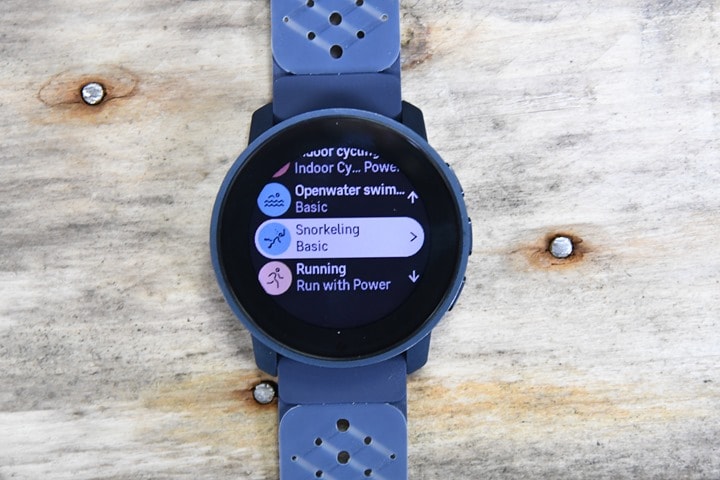
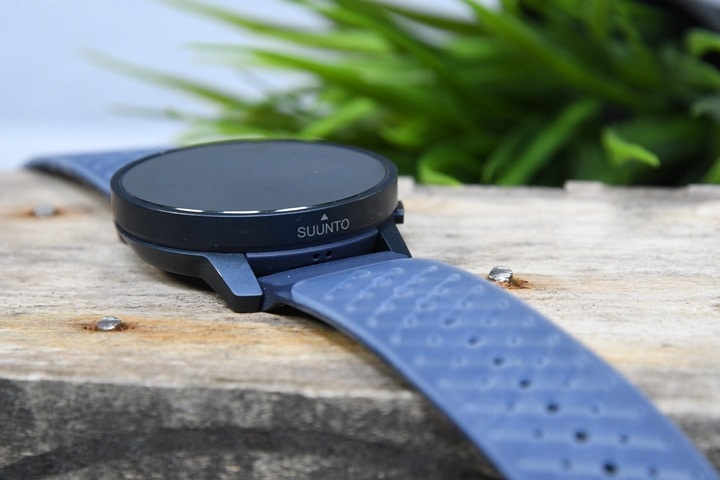
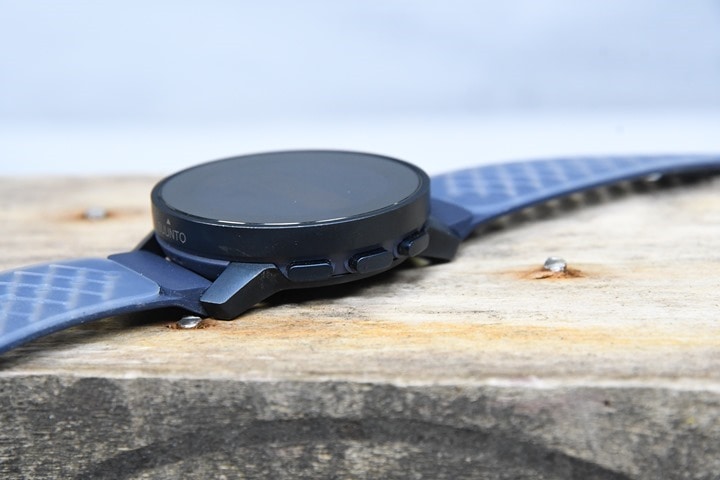
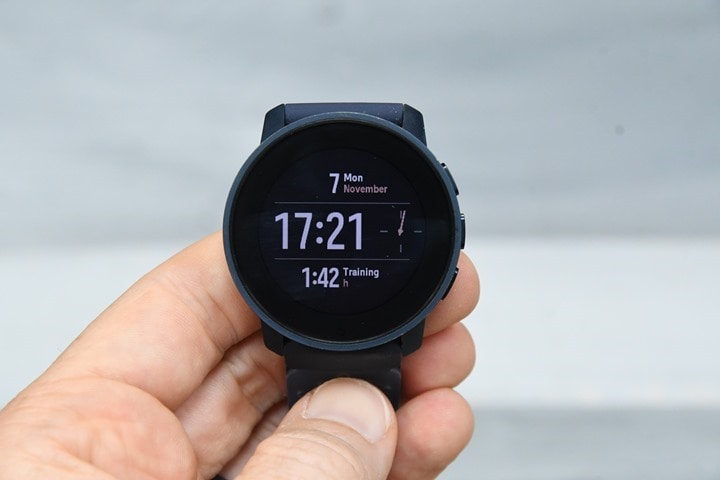
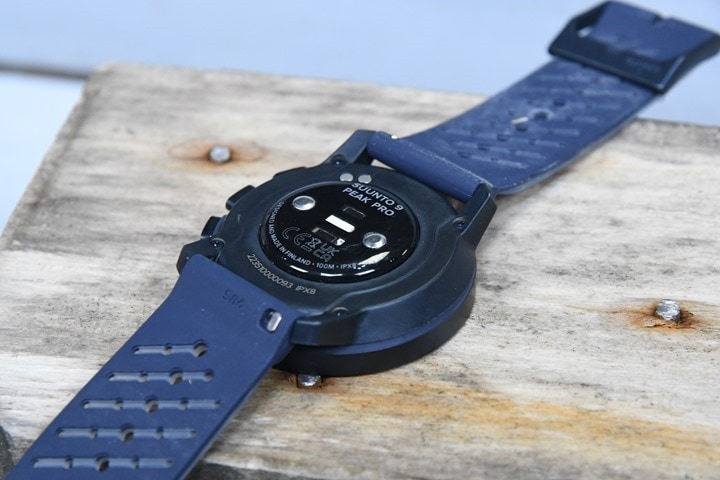
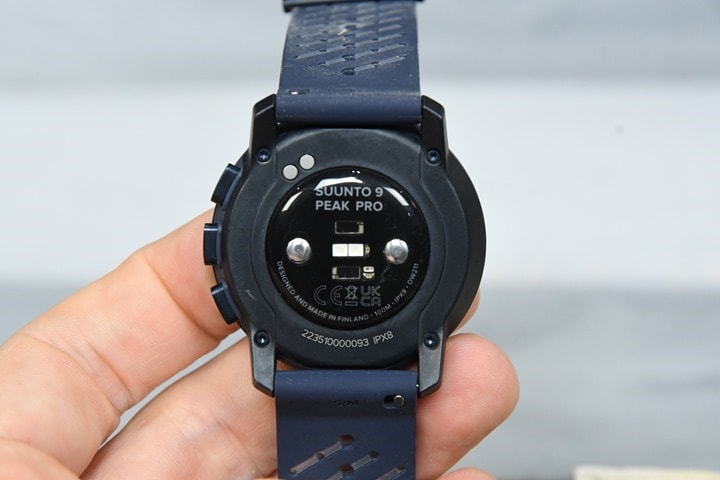

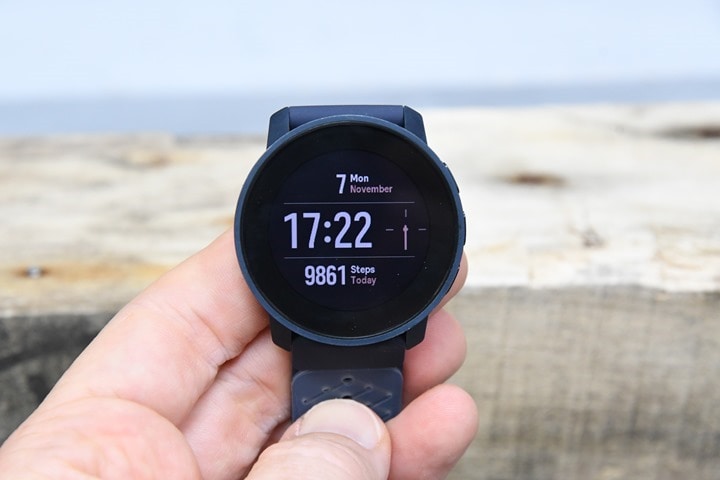
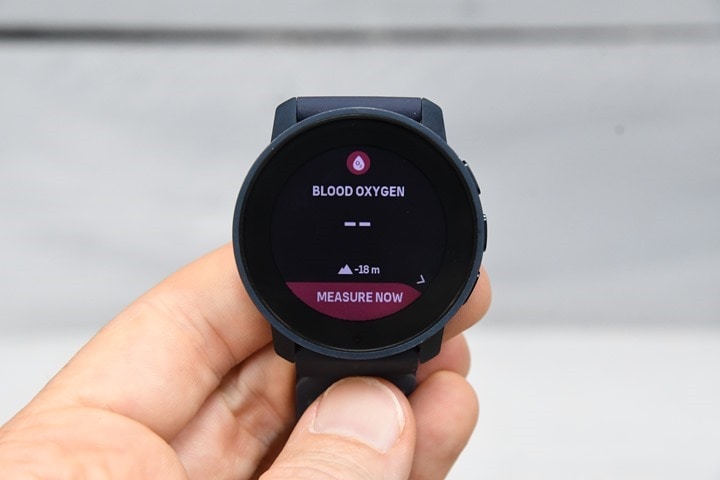
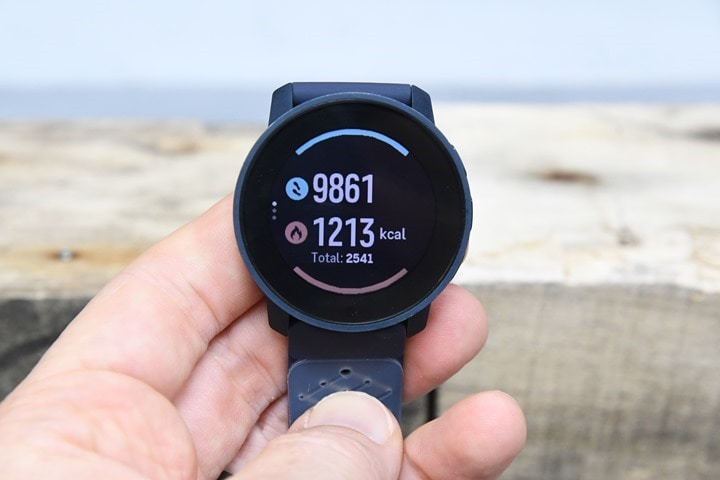



![clip_image001[13] clip_image001[13]](https://media.dcrainmaker.com/images/2022/11/clip_image00113_thumb.png)
![clip_image001[15] clip_image001[15]](https://media.dcrainmaker.com/images/2022/11/clip_image00115_thumb.png)
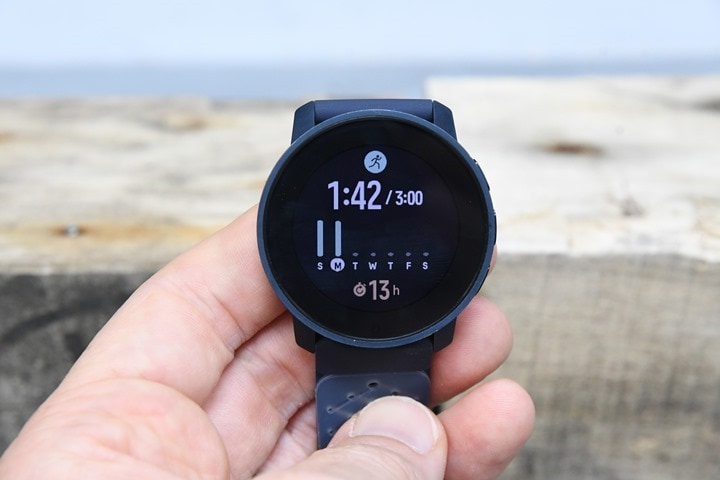
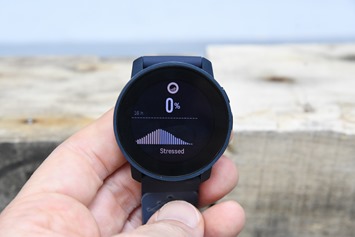
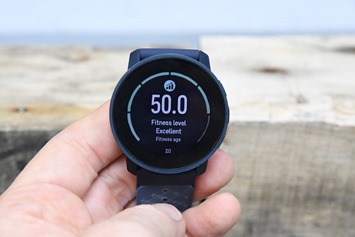
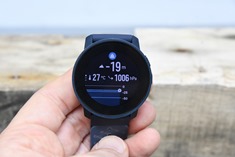

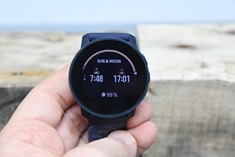
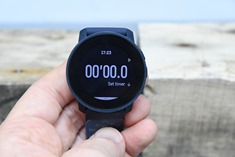
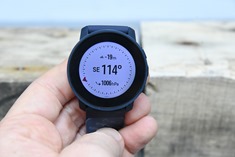
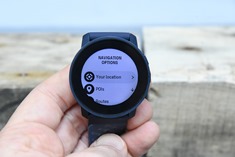
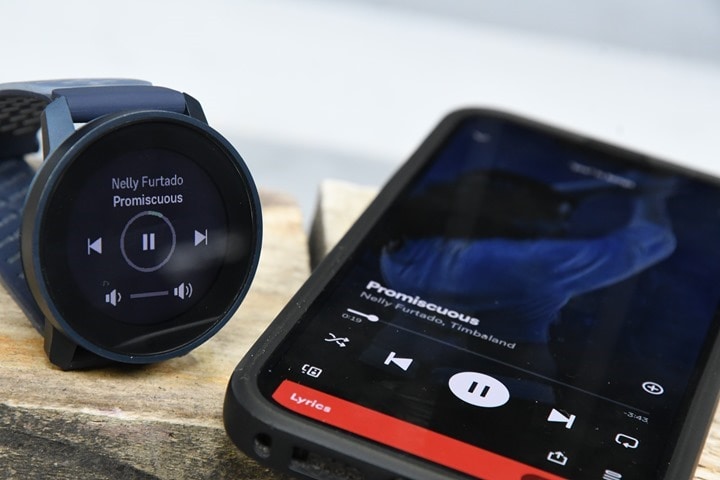
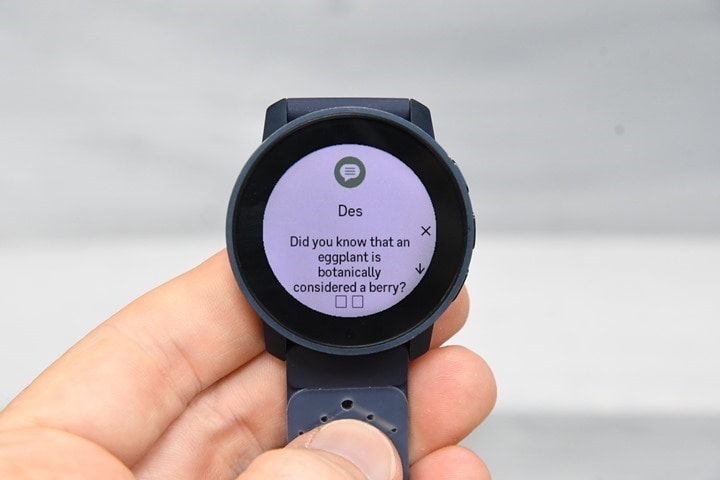
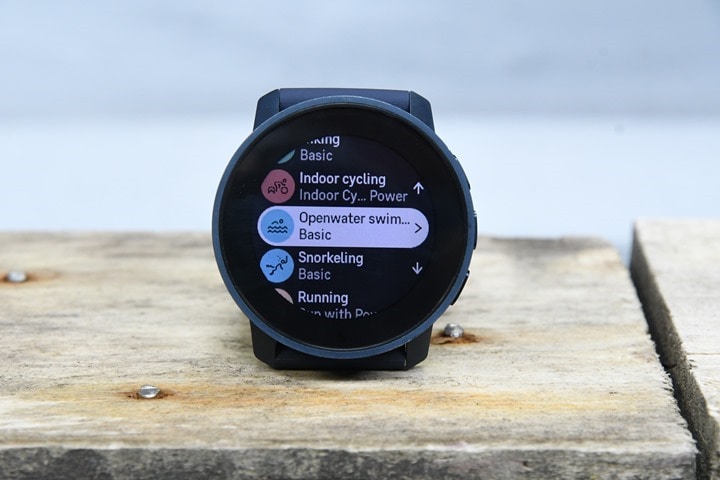
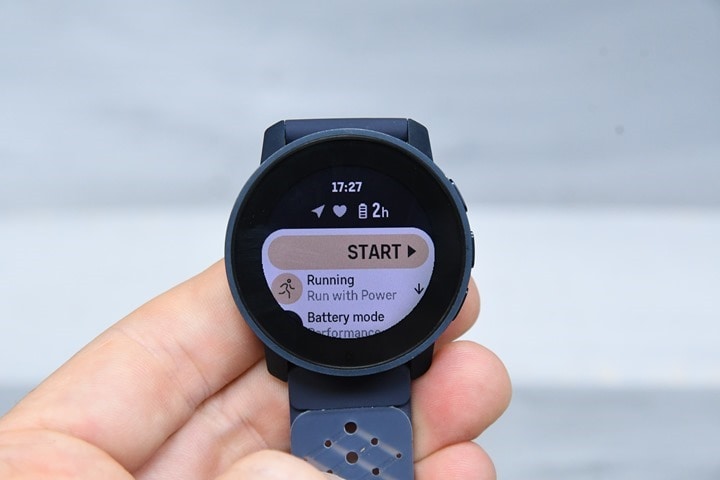
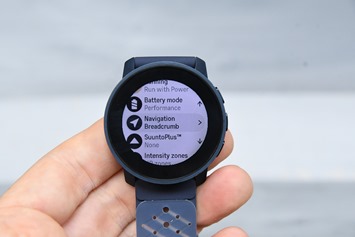
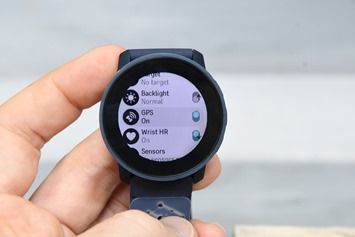
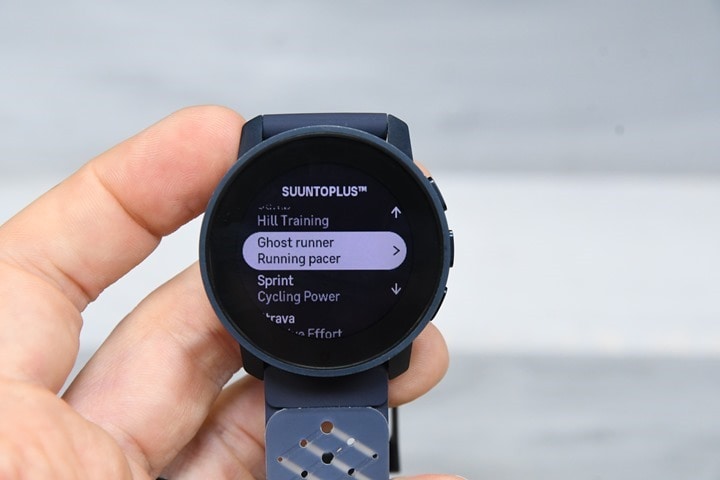

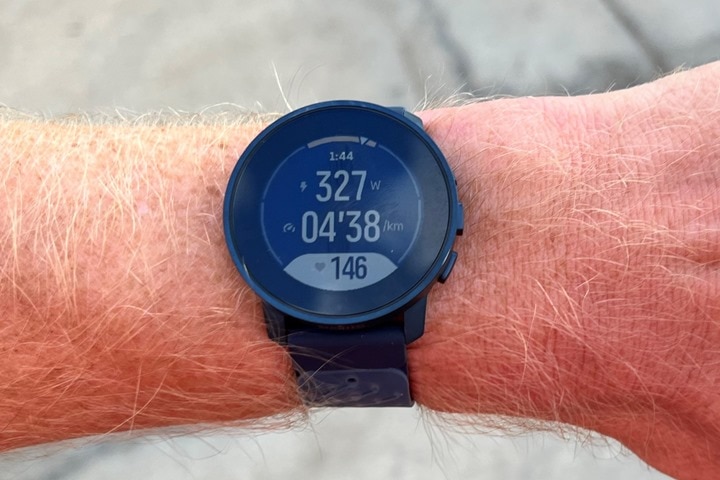

![clip_image001[1] clip_image001[1]](https://media.dcrainmaker.com/images/2022/11/clip_image0011_thumb.png)
![clip_image001[3] clip_image001[3]](https://media.dcrainmaker.com/images/2022/11/clip_image0013_thumb.png)
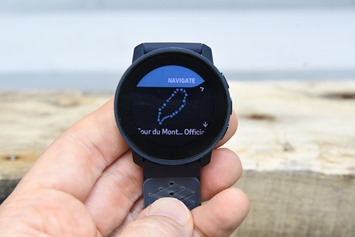
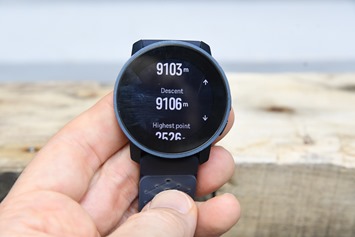

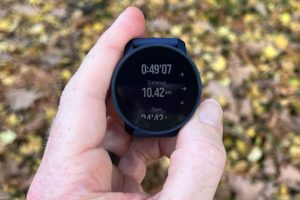
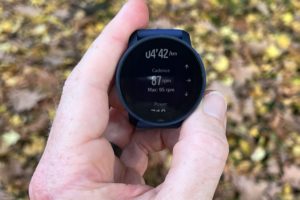
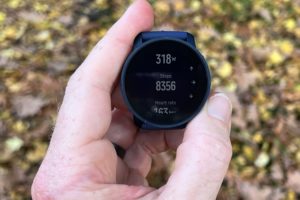
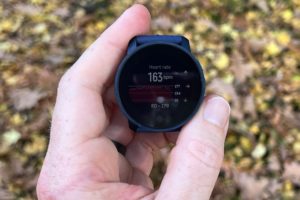
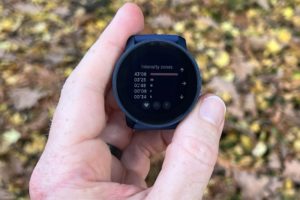
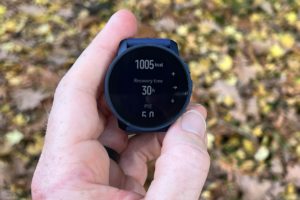
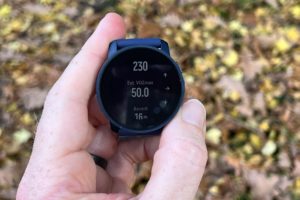
![clip_image001[5] clip_image001[5]](https://media.dcrainmaker.com/images/2022/11/clip_image0015_thumb.png)
![clip_image001[7] clip_image001[7]](https://media.dcrainmaker.com/images/2022/11/clip_image0017_thumb.png)
![clip_image001[9] clip_image001[9]](https://media.dcrainmaker.com/images/2022/11/clip_image0019_thumb.png)
![clip_image001[11] clip_image001[11]](https://media.dcrainmaker.com/images/2022/11/clip_image00111_thumb.png)
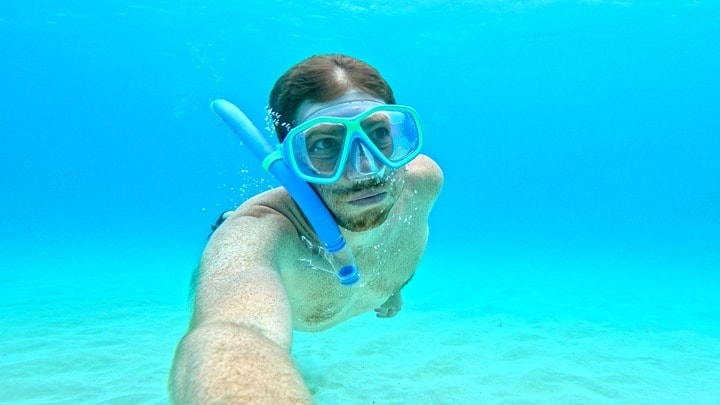

![clip_image001[6] clip_image001[6]](https://media.dcrainmaker.com/images/2022/11/clip_image0016_thumb.png)

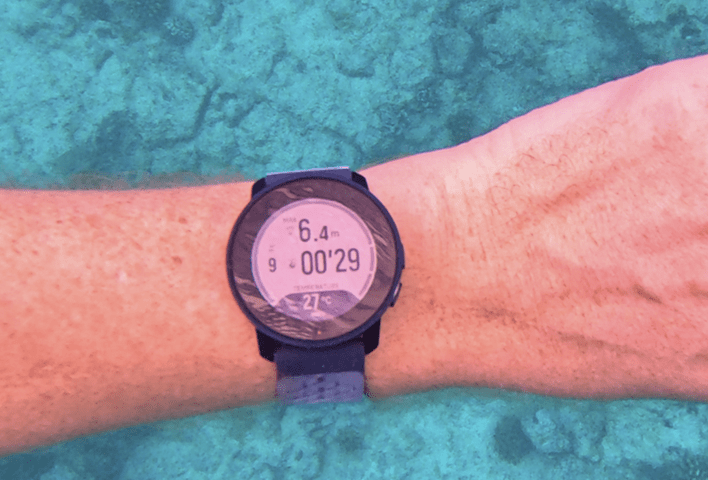
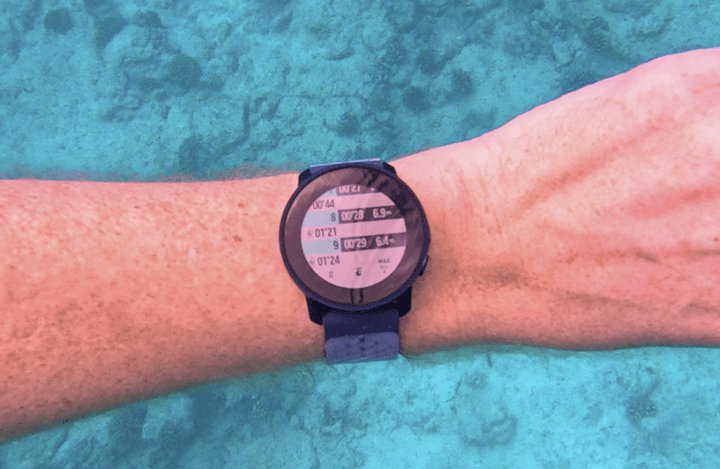
![clip_image001[8] clip_image001[8]](https://media.dcrainmaker.com/images/2022/11/clip_image0018_thumb.png)
![clip_image001[10] clip_image001[10]](https://media.dcrainmaker.com/images/2022/11/clip_image00110_thumb.png)
![clip_image001[12] clip_image001[12]](https://media.dcrainmaker.com/images/2022/11/clip_image00112_thumb.png)
![clip_image001[14] clip_image001[14]](https://media.dcrainmaker.com/images/2022/11/clip_image00114_thumb.png)
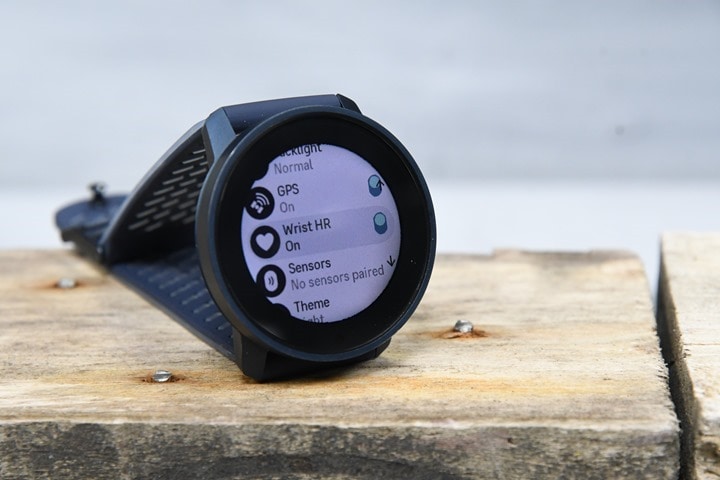
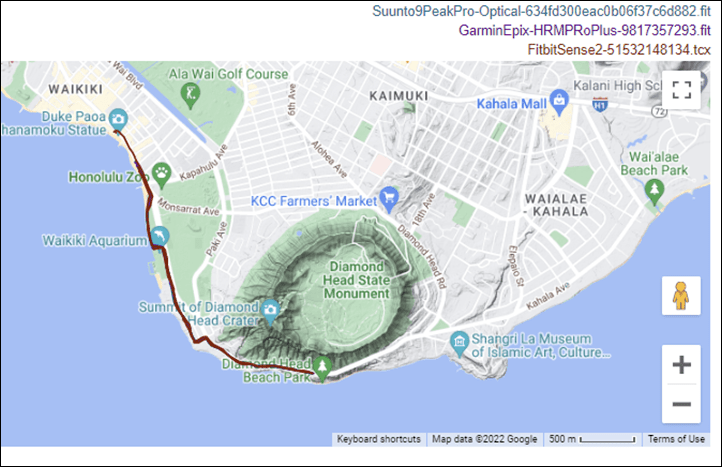

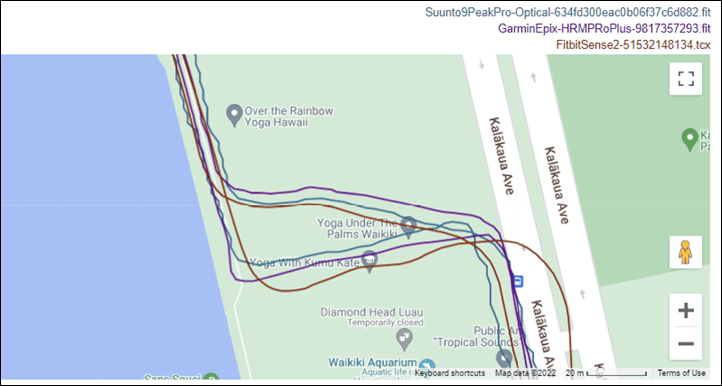
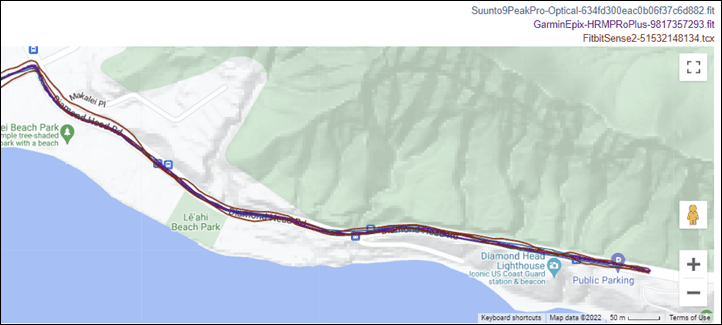


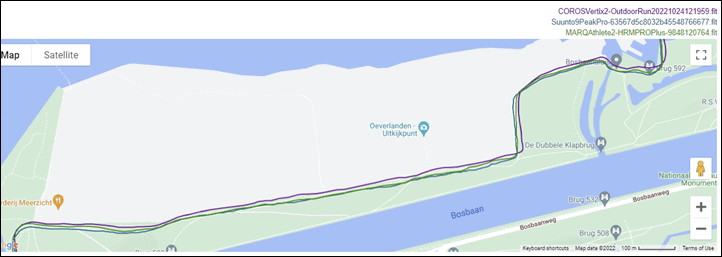
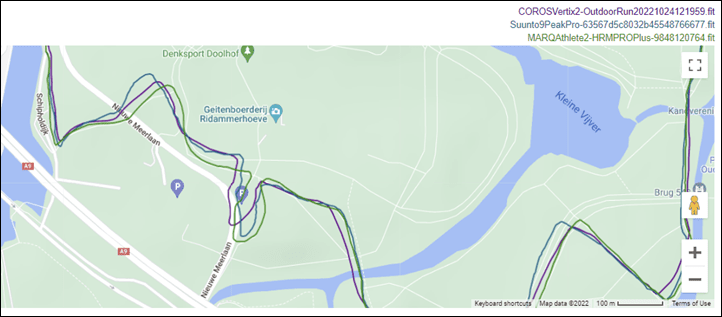

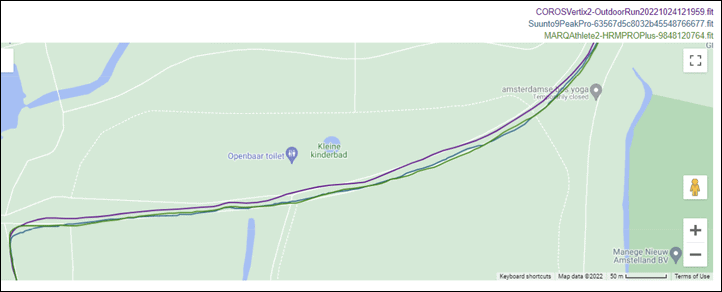

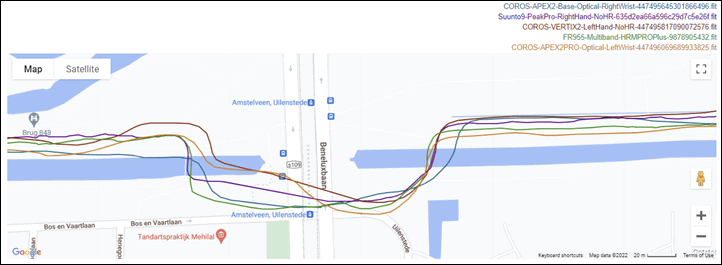
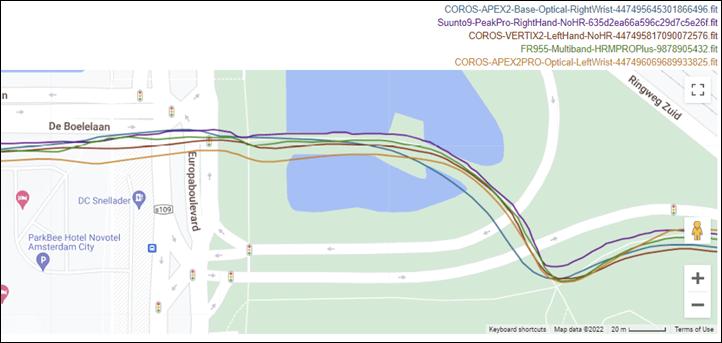
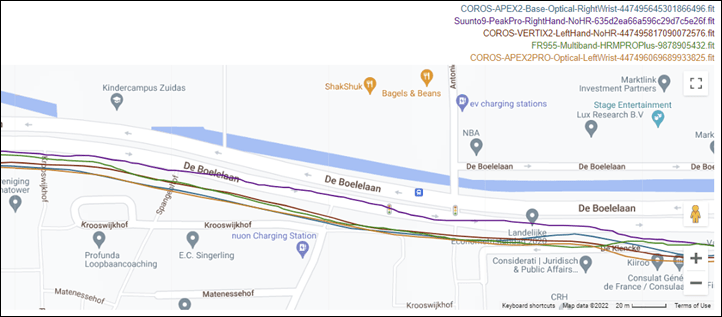
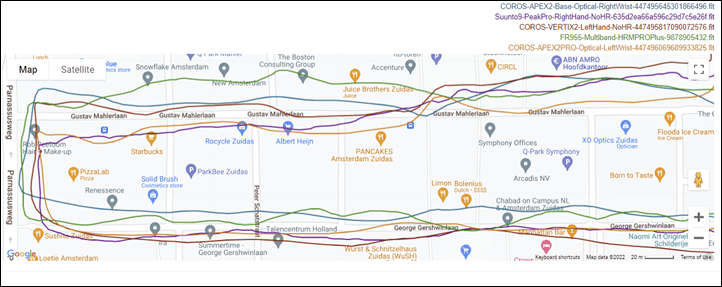
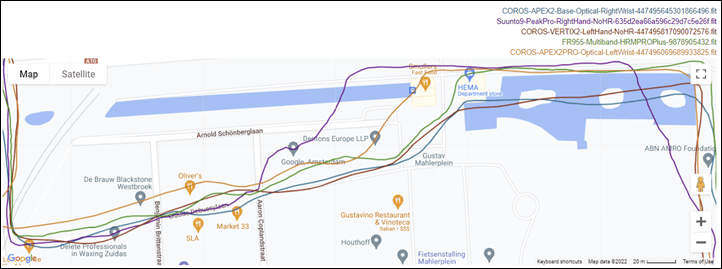
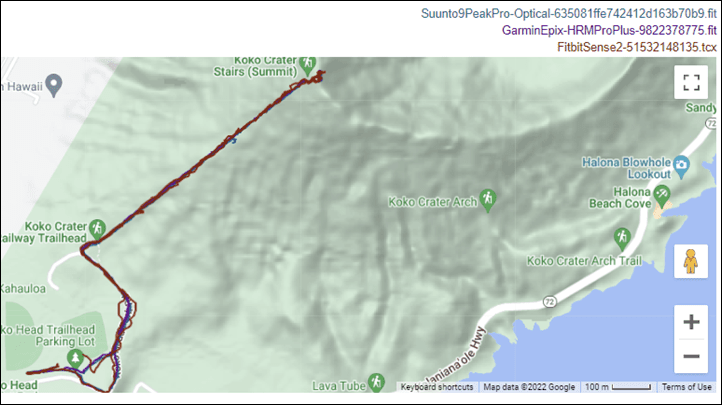
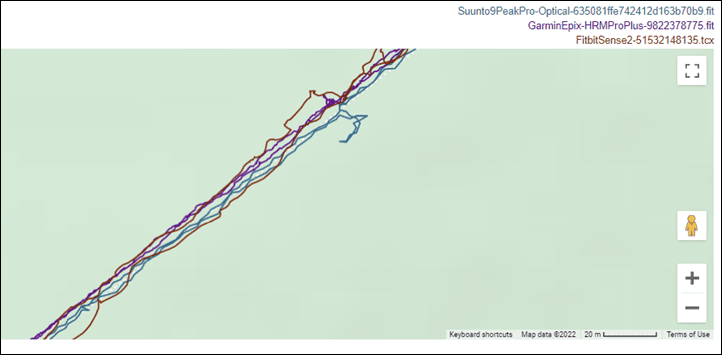




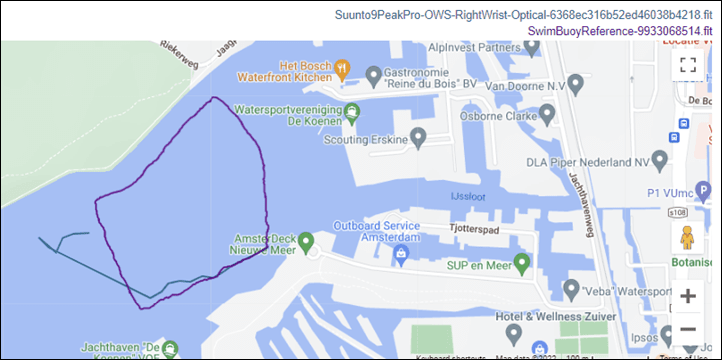
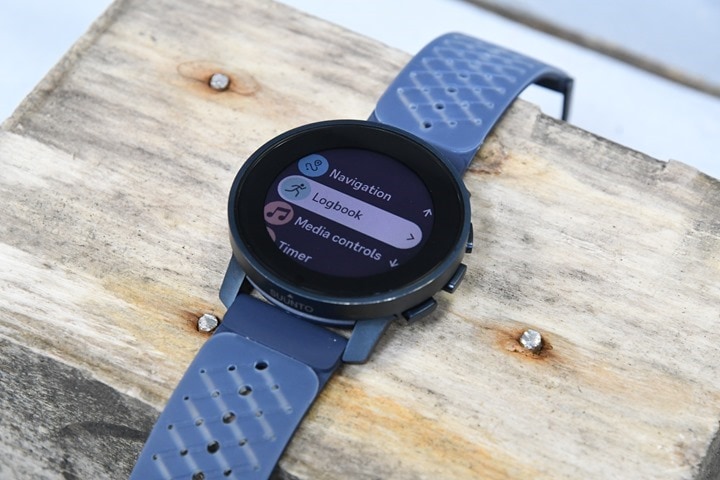

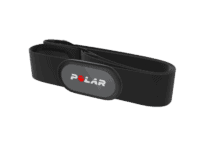
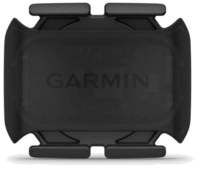
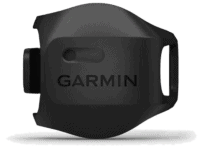
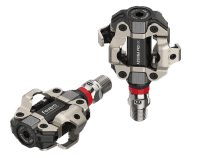
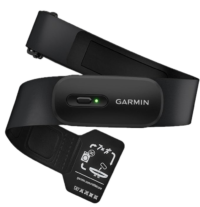

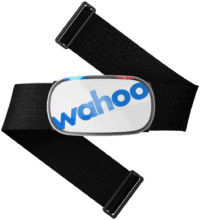



















great review.
HI there. Thanks so much for the review! Very thoughtful and lots to unpack. I went from Garmin 6X to Suunto 9 Peak to Vertix 2 and back to this SUUNTO Peak Pro, and I really really like it for its simplicity and lightness, and hopefully there will be improvements to come.
One correction. You stated, ‘You can’t reply to these messages from your watch, but you can dismiss them, which will concurrently dismiss them on the phone.’ This is a bit incorrect. Similar to Garmin Fenix 6 at least, you can add up to 5 preset/custom responses to the 9 Peak Pro to respond to texts, and responses are posted very quickly.
From the user manual: “For apps used for communications, you can use your watch to send a Quick reply. You can select and modify the predefined messages in Suunto app.”
Thanks Michael – though, that might be an Android thing. You can’t do that on iOS for sure (be it Suunto or Apple)., due to Apple limitations. :(
Thanks for being a DCR Supporter!
I always stumble upon that in your reviews. Might be an US american point of view thing. In countries where iPhones are not the standard, we are happily replying to text messages from our watches / bike computers 😊
Thanks for your in-depth review. Yet another pointless watch from Suunto. At this point i think nothing will be lost if they finally leave the sports watch market.
Well, except for the loss of a competitive marketplace that encourages innovation and celebration of individual choice and preference. Oh, and jobs lost at SUUNTO across the world. No loss for people and opinions though! :)
I hear you, problem is they stopped being competitive years ago. It’s just Garmin vs Coros vs Polar right now.
Erwin, It’s more certainly Garmin vs. Apple with Coros picking up some crumbs. Polar and Suunto are dead and just don’t know it yet. Maybe it shouldn’t be that way but it is. If you think I’m wrong, remember, we’ve lost Timex, Motorola, Epson, Bryton, Tom Tom, etc., etc. in the watch world. Yes, I know technically Timex has a gps watch or two but who owns one these days. At least Coros is innovating and has a chance to stay alive, Polar and Suunto not so much.
I’ve said this in other posts, but the Apple Watch and Garmin/Coros/Polar/Suunto aren’t attracting the same market.
The Apple Watch is a fashion smart watch with a pretty basic sport mode.
The others are sports watches with basic smart watch features.
Apples biggest issues are both the software and the fact that they rely too much on a small touch screen to operate that will never be as easy to use as a button layout. That, and to get more than a days worth of battery, you’re looking at a $800 purchase and need an iPhone, which has a small fraction of the worldwide market.
I like my Apple Watch to wear around, but it’s a terrible watch to use for actual running workouts.
Enjoyable review, with a question and a thought.
Can the Suunto 9PP remember more than one sensor per type? (eg two HR sensors, two power meters, discrete speed and cadence sensors on a bike…)
The talk of cost: whilst this watch is in a $:feature context expensive, is this the cost of manufacturing a watch in Finland instead of china or Taiwan? The low carbon cost is interesting too; what’s the cost of a Fēnix 7 Pro Solar? Considering just $:feature as a cost rating seems rather myopic given current environmental concerns.
Agree with your point here.
Thank You for your true opinion about the good and not So good sides of this watch. These articles give value.
Thanks David!
Thanks a lot for the complete review. It’s reallly interesting. For me, Suunto is still the best option for what I’m looking for: a good multisport watch, which fit on thin women wrist, with a 24/24 wearable look. It’s why we still need competition in this market: have different options for different needs.
100% agree. I’ve had an apple watch, garmin fenix, and finally switched to Suunto Peak, and haven’t looked back. I like the look way more in terms of wearing to work and found it’s more durable that either of my Fenix were. I traded up for the pro, and sold my old Peak after well over a year of hard use and it still looked new. Most of the other watches look a little excessively sporty, so I really appreciated the durable but clean and understated design of this watch. I like the less busy home screen options- the best option I could find for garmin showed a lot of information I didn’t need and looked busy. I managed to scratch both the screens on my fenixes. I also have been way happier with the Suunto for the activities I do. I backcountry ski a lot, which my fenix was horrendous at tracking. It tracked elevation gain sporadically, so my elevation gain would only update every 5-10 minutes. Then I had to hit a button when I started skiing down, which I always forgot to do, so then all of the data was inaccurate. My only work around was to track it as a mountain bike ride, which seems silly to have to do for what is supposed to be an outdoor sport watch. I love that you can easily customize the activities in Suunto to add what you want. The battery life is awesome. In terms of sport watches for mountain activities, this has hands down been my favorite, with a bonus that it has a really nice appearance.
Very good review. It’s in a tricky position that’s for sure.
Thanks Ray! My two cents: I feel your comment on the map toggle in the Suunto app is perhaps a tad bit too harsh. Garmin also requires you to go ‘Star’ a map in Strava, for instance, and, atleast for me, all hell breaks loose on the Connect side. Garmin seems to be cacheing the routes coming in from Strava and the sync to it just doesn’t flow well – highly unreliable in my case atleast. So, no platform is perfect and while Garmin has maps, dealing with it for me is quite a pain and focuses too much on these features that deviates away from the core functions.
Thanks.
Odd, I haven’t had that issue. These days, Strava auto-stars any new route you create (perhaps there’s some setting that I toggled years ago, I don’t know). And they all just instantly show up on my devices – Garmin or otherwise. :-/
Ray, thanks for another review. Regarding the bezel; is it realy that different from other manufacturers? I mean, appart from Apple, the other manufacturers hide the bezel underneath a metal ring with engravings, where Suunto chooses to have the “black nothing”. Isn’t this just a design choise? Additionally, isn’t this where the GPS antenna is placed? How is Apple able to do this without using screen area?
Des from DesFit discusses this in his video.TL;DR: no difference to some models from Garmin or Coros. And just as you say, its more a design choice where Suunto shows a black nothing while Garmin and Coros have a plastic/metal outer ring that kinda disguises a bit. Choose your poison, I guess.
The main difference isn’t the raw size of the bezel, but, the size of the bezel relative to the size of the display.
The display size on the FR955, for example, is bigger (1.3″ vs 1.2″ on Suunto 9 Peak Pro). While concurrently, the Suunto 9 Peak Pro bezel I measure at 6.77mm wide. The FR955 bezel is 6.35mm. So basically, the Suunto 9 Peak Pro bezel is bigger, yet with a smaller display.
And while I think the exterior style of the case of the Suunto 9 Peak series is nice, the bezel design from a style standpoint makes it look worse than some other bezels that have something else going on.
I’m rarely one to mention/talk about bezels, but it’s definitely a factor here.
OK, that’s a valid point. As a S9P user, I’ve never been bothered by the Bezel. But it’s logical that it shows when comparing muliple devices next to each other.
Limited screen size (and resolution?), missing offline music control, lack of multiple sensor support, and lack of map functionality are certainly improvement points that need to be implemented rather sooner than later. For me that is enough reason for not upgrading from the S9P to the S9PP.
Though I still like the clean, no nonsense, Suunto UI and design. Less is more.
“So basically, the Suunto 9 Peak Pro bezel is bigger, yet with a smaller display.”
But this is not quite true, and i believe that was also Des’s point. The FR955 is, in total size, 46,5*46,5 mm. The Suunto 9 Peak (and 9 Peak Pro) are 43*43mm. In turn, the display is 1.3” (3,32 vs 1.2” (30,48 mm) – a difference of 2,72 mm, which is less than the 3,5 mm difference in total width.
It’s just that a larger part of that “non-used size” is hidden in the FR955, whereas most of it is “visible” in the Suunto 9 Peak (Pro). With the resul that the “display bezel” is larger in the Suunto 9 Peak Pro, but the effective size-display ratio is actually the same (if slightly better in the Suunto). Garmin is probably making a more in-line with consumer design choice here, going from the coments and understanding of this, but in real terms it’s essentialy not the case that the ununsed space is larger in the Suunto watch.
(to go deeper in numbers, the full surface of the FR955 is 1700 mm2, with an effective display surface of 865 mm2, so a 50,9% ratio. The Suunto 9 Peak Pro stands at 1450 mm2 total surface with 730 mm2, so a 50,3% ratio).
Yeah, I’m not sure what to say – as noted, I just measured the actual bezels on both of them, and the FR955 bezel is smaller, while the FR955 display is bigger. Setting aside how the bezels are designed (which is a factor as well), factually, what I wrote above is very much the case.
The eyes are really good at noticing screen size differences (which is what most people notice), but the electronic calipers are even better at explaining it.
Note, as I established with previous videos/posts (namely the Samsung watch one), how companies ‘measure’ their devices is an entirely different ballgame, for example whether they include the curved portion of a bezel or not, or buttons or not, etc… Which, is why for this comment I specifically measured the bezel manually.
As I mentioned, I believe this to be a “bad” design decision on Suunto’s part. i.e. making the entire “screen bezel” visible, while having an external metal ring only as a structural component rather than something that blends with the unused part of the screen. Thus making it look like there’s more unused space. They might have their reasons to do that, but bottom line a lot of people tend (with their eyes, as you mention) to perceive it badly.
I must say I was disappointed you didn’t get out the calipers for the thickness on this one after your recent post about it. I’m one of those people who want the overall measurement and I absolutely notice the larger bump on the Fenix 7 compared to 6.
Regarding the bezel, I’m with Ray. Not because he’s right necessarily but because his opinion matters. My Fenix 5 looks clunky and old fashioned to me now. It’s not because it is, it’s because I can’t un-see the far better Fenix 7 or Epix. We have to accept that Ray spends a long time, probably more than is healthy, looking at sports watches. He can’t set aside the months of using Epix and pretend smaller screens with bigger bezels are just as good. For those who’ve never used an Epix the 9PP will look just fine, but a couple of days living in the future and it’s hard to go back. On paper the screen size difference is tiny. Out in the real world, the smaller screen looks dated when you’ve used the slightly larger one. I can’t use my Fenix 5 now for this reason, it bugs me every time I look at it. Let’s also bear in mind that these watches were just announced, they have to compete not only today but a year from now too when the world inevitably moves on to smaller bezels and bigger screens
The last time I got out the calipers I went down a rabbit hole that cost me multiple days of productivity…
even just the rolling pin – that never lied about thickness!
Now that I do actually have. Just gotta figure out which of 8-10 SD cards in my wallet it’s on, fish it out, and get it uploaded. Hope to do that over the next 7 hours before I land.
Why would one even consider doing an openwater swim in water at 13 degC without a wetsuit? How did this happen? Did you simply forgot to bring it? Or did you go to the pond in trunks, put your toe in and thought “Oh, that’s cooler than I thought… but since I am here anyhow, let’s do it”?
Nice review, as always 👍
More importantly: Why didn’t you do the swim in warmer waters? Instead of snorkeling all day long 😏
As I’ve discovered now living in the Netherlands, going to the swim dock with a wetsuit is considered a laughable offense. When the five 80yo ladies in front of you jump in with (at best) at swimsuit for their daily swim (in January), it’s hard to jump after them in full wetsuit.
I don’t understand it either.
As for not getting these swims done in Hawaii instead? Totally agree. Though, I did actually go out to get one swim done there and then immediately got stung by a jellyfish, so that set things back slightly.
Ok, I get that. I normally do my swims outdoors in the pool as long as it is open in autumn (less long due to energy crisis, this year). Due to the lack of any nearby swimable lake or anything comparable. And at some point, I start wearing a wetsuit, because otherwise I get out of the water really freezing.
The old ladies swimming there don’t wear wetsuits either… But most of them do shorter swims. Normally I swim around 45 mins to an hour and anything longer than 30 mins is an issue to me if it is really cold.
I’ve had a Suunto 9 Baro for about 4 years now and looking to upgrade. As an aging triathlete and trail runner, my main issues with my current watch have been:
1. battery life not lasting my longer ultra trail races
2. some UI elements on the dim display so small that they are not readable without reading glasses (which I don’t carry while running)
3. inaccurate optical HR while swimming which messes up training load and recovery metrics. Open water swimming works quite fine so far.
If I understand correctly, this new watch will resolve the battery life issue, but not the others? And probably will break open water swimming?
I’ve been sticking with Suunto so far mainly because it’s reliability (never lost a workout during 8 years with Suunto watches) and the route planning features of Suunto app. But it seems I could continue to plan routes using Suunto app and export them to some other platform for use with a watch from another brand.
Thanks for this review. Had a Suunto 9 Peak Ti in the bast and the bezel got scratched mostly at home. It seems on your pics that the black is already wearing out, can you comment on that?
Actually (since a few years) I am with Coros Pace 2. I am looking forward to another watch which is also called as “lightweight watch” for running, riding & sometimes swimming. I like the sync-speed of the coros app. Polar was a bit unpretty here. Beside this, I truly interested in
Coros Apex 2 base (which is a bit too heavy I think)
Polar Pacer Pro (seems really fine but sync-speed ist awful)
Garmin FR (255/955) is a bit too expansive and doesn’t support wrist-based running power.
Suunto 9PP is really nice to look at but also very, very expansive for my needs.
So…I have to wait for Coros Pace 3 – right?
“Garmin FR (255/955) … doesn’t support wrist-based running power.”
Actually since November 1 it has been supported on FR255
in the latest beta firmware (“Public Beta Version 13.15”).
Although this firmware is a beta one, but an RC (Release Candidate),
so it will be published soon as final FW version as well.
It’s in beta for the 955 too.
” Snorkeling Mode– Mermaid Mode – ability to act as a depth gauge underwater”
Very ineresting. Up to 10 meters under water? Does the watch have special seals/buttons for that? Water rating is 10ATM (like many Garmin watches have). So theoretically possible for Garmin wachtes (if Garmin were willing?)
10ATM is 100m. The Fenix can be worn while diving, it’s just not a “dive watch” but the seals are fine even if the buttons are not guaranteed to work at depth (they do, though). Many certified dive watches and depth instruments are certified to 10ATM, although serious ones usually 20ATM.
Believe it or not there used to be a ConnectIQ app that did depths exactly like this watch, but Garmin killed it when they released the dive computer range to “avoid confusion” (aka sell more dive watches). It’s still possible to side load depth apps to Fenix if you know how to write them, but the sensor is only good for shallow use so not really worthwhile unless you’re a really avid snorkeller. It’s not deep enough for free diving (and neither is 9PP).
Garmin kill any and all discussion of diving with Fenix and Epix so it’s not common knowledge. In the crazy US legal system they need to since they are not dive computers and neither are they dive watches, both of which have definitions and standards. As such they can’t be seen to condone diving with the watch out of fear of being sued.
This is not fully accurate.
The Fenix 7 (pretty much as the Suunto 9 Peak Pro) is *not* water resistance to either the ISO 6425 (dive watches) or EN13319 (diving accessory) standards. Their website doesn’t mention a water resistance standard (likely because there’s nothing in between the ISO 22810 – water resistant watch and ISO 6425), but it is rated 10 ATM. And when you go to the page where they define what the water resistance is (link to garmin.com – sorry Ray if I should post links differently) you will see that it’s a standard “Withstands pressures equivalent to a depth of 100 meters. Splashes, rain or snow, showering, swimming, diving into water, snorkeling, high-speed water sports”. It most certainly does not include diving – for which you’d need ISO 6425, but to get ISO 6425 you need further capabilities.
This is not to say it will likely fail if you dive with it. It most likely won’t, in much the same way as a Suunto 9 Baro wouldn’t. But Garmin, on a legal page, refers to a classification far closer to ISO 22810 for it. Meaning that if you dived with it and it flooded, Garmin (or Suunto) could very well refuse warranty on it.
The reason why they killed the diving apps is indeed likely to avoid legal issues by offering diving capabilities on a device that’s not certified for diving. And it’s not really just the US legal system, that would not go down well in Europe either.
Tim, you’re reading your own narrative between the lines and coming to all sorts of loopy conclusions. The reason Fenix doesn’t meet those standards is because it’s not designed to those standards. It isn’t a depth guage for diving and therefore obviously doesn’t meet that standard. It’s not designed as a dive watch, which has some specific requirements around visibility and timing functions which the Fenix doesn’t have or need because it’s not designed for use as a dive watch (aka dive timer). It absolutely can be worn while diving, and can be used as a watch while doing so. You’d obviously also need a depth guage and dive timer or dive computer to manage the actual dive.
Taking a watch diving and using a dive watch are different things. Everything I said was 100% accurate, the Fenix can be worn while diving and was designed to withstand those depths without any issues. Just because they don’t call it a dive watch has no bearing at all on water resistance.
My underwear isn’t certified for diving either, yet it copes admirably even when a large fish scares me. Don’t confuse “using while” with “designed for”.
If you dive with a Fenix and it leaks, you can absolutely claim against Garmin – it is rated to 100m and you’d have evidence of the depth at the time of failure in your dive log. Garmin have never said the watch will have issues at depth, all they said is “it’s not a dive watch” and they are correct.
Did you completely forget to do a battery section?
I included the battery specs in the ‘What’s New’ section. I’d say they seem pretty on-target. It’s always tough with these watches that have ultra-long battery life since they simply last a long-ass time.
And unfortunately, unlike many other brands, Suunto doesn’t write the battery info to the .FIT file, so I can’t do burn comparisons in real-time. :(
It’s not uncommon to hear people say how a higher-end watch needs to have music storage to be competitive in 2022. I’m not sure if this is the right place to ask, but what kind of user is on-board music geared for? I’m primarily a trail runner and mountain biker, and for better or worse, many trail enthusiasts are almost “shamed” for listening to music, because the point is to connect with nature, as well as to be aware of wildlife and other potential hazards. I don’t do a lot in snow or water, but I can’t imagine winter sports or water sports being places where music is widely utilized, and certainly not in the team sports that companies like Suunto have as activity options.
Is music really a vital feature moving forward? Or is it overhyped? I know road/greenway runners would want music — and maybe road cyclists? But if the Suuntos/Coroses/Polars of the world are targeting more off-grid users, there seems to be little incentive to implement viable music options. I say “viable” because I know Coros has some music, but really, I haven’t had a song in mp3 format in 12+ years, so it’s not a particularly effective/worthwhile implementation of that kind of feature.
Music, to me, just seems to be a non-issue for so many activities. But I’m genuinely asking this because I’m happy to be set straight :)
Hi. Just my 2 cents on the music, but Ive had both Garmin and COROS, and I did have MP3’s to download to both and appreciated that I could leave my phone behind for workouts – I like the distraction of music when running/riding/gym, and I do use bone conduction earphones for road riding. So for me, having that option does lead to unplugging from the world a bit and still be able to listen to music.
Many thanks! I appreciate your perspective on this!
You are welcome! :)
Another perspective: I do absolutely nothing with onboard music without LTE. As a woman I will never go out on a run without a cellular device. So the only watch where I’ve actually benefited of onboard music storage is a smartwatch. And that helps make road runs less mundane. But when biking or walking the dog I never listen to music anyway in order to hear the traffic around me.
I agree with Michael K. and would say it’s not overhyped at all. Sure, there are your hard core trail runners who don’t use music. But, you have to look at the most common users of these watches. People tend to buy more watch than they need and so, you have regular folks buying trail running watchers for better battery life, etc. But regular folks do a couple things far more than most other athletes and that is (1) go to the gym and (2) jog or run. When you analyze this you notice that the vast majority listen to music while at the gym or on a run, whether treadmill or outdoors. So, where are the vast majority of these watches used? The gym or on simple short runs. Guess what, people want music. The vast majority want music. I remember 5k runs a few years back and it seemed 70% of the folks ran with a phone and music but if you went to a half or full marathon far fewer phones and more watches. I run and bike with music and have since, well, since ever. I remember launching an expensive cassette player off the end of a treadmill and watching it blast into a dozen pieces. Running with music has been a thing since the Walkman in the ’80s and isn’t slowing down.
Yeah, I don’t think it’s absolutely critical (for example for myself), but it is for a lot (and growing) number of people. And it’s a hard-no if the watch isn’t capable of it.
The challenge these companies have is sorta the same spot COROS is in. Sure, they can add music playback via MP3 and BT headphones relatively easily. But that’s also not what 95%+ of the market actually wants. They want streaming services these days.
And unfortunately, those castle walls are pretty well solidified now, and that’s unlikely to change. Suunto can handle that more on the Suunto 7 side, but it’s unclear what the plan is there.
Completely agree! As a trail runner I do not listen to music during my runs – whole point for me is to connect with my surroundings otherwise the dreadmill would do. There is also the safety aspect, being able to hear what’s going on around you is important when you’re in the middle of nowhere.
Anyways for me, music is a 100% non-issue on my watch – love the Suunto 9PP.
Thanks Ray, I am gutted Suunto haven’t improved. I loved the Ambit3 Peak and was bitterly disappointed with everything Suunto offered after that. I even left the warm Suunto embrace to turn to Garmin and Apple Watch.
Love your reviews, they are my go to before buying my gadgets.
Thanks again for including information about the emoji support. It’s the main line of communication with my wife, hence essential having it in the messages landing on a watch. Don’t let me start how many times I had to fish for my phone mid run to check what’s the unsupported emoji/square is really saying… Is it really that hard for developers to include the emoji support in messages? Anyone?
The main challenge is that basically companies have to recreate the emoji themselves. They can’t just use the same emoji from your phone, because those are copyright from Apple/Google/etc…
There are of course things you can license, but some of that has challenges scaling at the volumes we’re talking about here.
Either way, I very much agree – emoji are important in notifications in 2022, and I expect for any brand to have broad emoji support, especially an eggplant.
Thanks for the insight! So that’s why it’s a piece of cake for Garmin and Apple (volume), and economically not available for smaller companies to allocate development money for all those fruits and vegetables (I’ll leave the eggplant emoji to bachelors out there).
Funny to see that so little people cared for the bezel on e.g. polar Grit X (Pro), which is on a 47mm watch with huge metal rings around it. While so many care now. The display/bezel ratio on polar watches is very similar, yet it got very little attention.
That Garmin’s pricing policy is crazy yet the community is huped for a 1K USD watch, makes less sense to me, than a bezel size.
As noted above, it’s because they hide it better. The bezel design/etc doesn’t make it stand-out as a field of emptiness. But there’s also the simple reality that watch design moves on.
Since that watch was released a bit over a year ago, we’ve seen numerous other watches with better ratios or displays. Nothing is static. In the same way that while Garmin makes $1K+ watches, the Garmin watch everyone is referring to here is $499 – cheaper than the Suunto 9 Peak Pro.
FR 955 is still a plastic watch, while Suunto peak pro is metal and sapphire crystal. Sapphire fenix 7 starts at over $800 as far as I know. let’s compare apples to apples :)
Why is an apple defined by a small bit of metal around the edge, rather than the massive slate of features you’ll actually use?
That would then be comparing an apple (Suunto 9 Peak Pro) to…apple pie (Garmin Fenix 7)? lol.
I like the non-bezel look as its unique in this category. I mean…look at the huge bezel on the new Garmin Instinct Crossover! There is a reason people are comparing it to Casio. Personal choice. The 9 Peak did win an award though through the Chicago Athenaeum Museum of Architecture and Design: link to chi-athenaeum.org
Because it adds to the price as clear from the price difference between Fenix and FR. The design is a feature as well. And if someone doesn’t care about that massive slate of feature that add to complexity (and bugs), it may be perfectly valid deciding factor and not something to dismiss in comparisons.
It’s funny, everybody here are complaining about the bezel, but over in the comments on the new Garmin, people are salivating over what must be the single ugliest watch I’ve ever seen, and which you couldn’t pay me to put on my wrist. I guess people are different and that’s the point for making a watch like this Suunto, which I (as a Scandinavian) find to be attractive and understated, in perfect alignment with my personal preferences. So for me, the design is a huge feature of this Suunto, and I wouldn’t touch most of the watches from Garmin and Coros with a stick. But why all the hate on a watch that is clearly trying to not look like all the others? The large visible bezel is just fine when compared to all the junk others put on their watches to disguise it.
But that’s where Suunto Peak Pro pros end. 955 is better in every way, starting from topo maps, nfc payments, ending at Garmin’s huge ecosystem. Suunto is priced like a fenix, yet it behaves like a hatched chick.
But what if I prize design (of both the watch and app—the Garmin and Coros apps hurt my eyes as much as their watches do), sustainability, and the fact that it’s made by adults in Finland more than a bunch of features I don’t need and will never use? Surely the total number of features cannot be the only yardstick? As Ray has repeatedly pointed out, Suunto themselves are aware that they can’t compete on features and only Garmin has the size to negotiate things like music streaming and payments (and Garmin Pay is not even that widely supported here in the UK anyway, with only a handful of banks offering it), so of course companies like Suunto has to find another way of setting themselves apart. For now, one of those ways seems to be through clean, minimalist, understated design. When Ray asks above why an apple is “defined by a small bit of metal around the edge”, then that seems to miss the point entirely, to be frank—design, material, and build quality is very much a feature here, as it has been for anyone making wrist watches since they were first invented. I agree that the Suunto Peaks are not everyone’s cup of tea, but I’m also someone who would rather buy a small and sleek car than a monstrous and bulging SUV. My point here is just that people may want different things from a watch they wear every day, and that it’s possible to compete on other things than brute number of features. As for myself, I have no need for music, maps, and payments, as well as all the random stats generated by Garmin, and so my Suunto works really well for me on my ultras, multi-week through-hikes, and daily runs, and I even—gasp!—like the way it looks. Why is that so hard to understand? Why is there this need for every Garmin bro to dunk on Suunto?
Pretty much objectively about subjective (design), nothing to argue with.
Now, I wish I don’t need to return my Peak 9 Pro due to very mediocre HR sensor performance…
Really, it’s very simple speaking of purely rational choice – you decide based on specifications, features, and design. As nothing is perfect you go for the compromise (e.g. no music but robust and nice build quality) and hope you get what you have thoughtfully chosen. The problem appears when you figure out, that HR feature is indeed there, but it’s totally useless for measuring heart rate during activities.
I do not care if the current trend is bezel-less unless I find it personally ugly, and I don’t. But dammit, the claimed features have to work properly.
Same here, Bobson, great point. I drive Golf, I dislike SUV’s, love the understated look of the Peak. Wish Garmin could cater to our “segment” in the future – Fenix build quality with slimmer understated design.
My biggest fear is that the market becomes so saturated with devices from one vendor, that reviews sites start popping up called Garmin9to5.com, GarminCentral.com, or wait for it, Gmore.com (as opposed to iMore)….
All kidding aside, I’m grateful for sites like DCRainmaker to provide an in depth coverage of devices across many use cases.
I seriously like this review more than any of da watches described in da review. Only if somebody could make ECG HR watch as accurate and detailed as this review! Super awesome precision review
Hi Ray,
I’m sorry if I missed this. I’ve searched everywhere on your site and can’t seem to find the answer.
Can you explain multi-band GPS in simple terms and what are the benefits?
If this new Suunto 9 Peak Pro can connect to multiple satellite systems (GPS/QZSS/Galileo/Beidou/GLONASS) at the same time, why isn’t that considered multi-band?
If the Suunto 9 Peak Pro GPS is more accurate than some of the other multi-band watches, what’s the point of multi-band?
check out his vertix 2 review and epix/fenix7 review. Multi satellite connects to many satellites, multi band/dual frequency connects to two different frequencies on each constellation that can further increase accuracy. Multiband when implemented well like on the garmin watches beats multi satellite in challenging conditions. The coros implementation has proven so far to be inferior to garmin, nothing at this time beats the accuracy of garmin multiband so if you are going to pay extra for multiband at this time it only makes sense to get a garmin.
The easiest way to think of multi-band is that the watch gets 2 different channels to the SAME satellite.
Because of the different nature of the two channels, the watch will get two slightly different measurements in difficult scenarios (tree cover, urban canyons, etc) and so theoretically it’s possible to infer additional information by combining the two (eg. signal reflected off a building, user it’s on the other side of the road), but it’s up to the brands to try to make sense of it.
Are you finding the 955 more accurate over the epix/fenix units? I noticed that the past several reviews you seem to just use that and not the others.
It seems about the same – I haven’t seen any notable differences.
Most of my reasoning for the FR955 is I’ve always kinda been partial to the lighter weight watch over a Fenix-weight watch. And honestly, the other piece is that when I’m grabbing watches off the cluster-f that is my desk or tables, the singular white watch that is the FR955 I have, is easy to spot. :)
That’s fair enough! Thanks!
thank you very much Ray for this superb review (as usual)!
I’m still using a Suunto ambit 3 peak for running, swimming and triathlon and I think it’s time for a change now ;-)
I really like the robustness of Suunto products but I wonder what Suunto’s software update policy is now (compare to hardware update).
I mean, can we expect major updates of the software (maps, features like “stamina”, etc.) in the near future for this watch or Suunto only brings big new features with a new product?
thank you for your answer.
Charles
I’m in the same boat as you, my ambit3 just wont die. (Currently, if I want to do a strutured workout I use a sheet of paper).
There was a Suunto survey weeks ago.. one of the features that they were asking was regarding smart coaching and recovery. If any brand does something like an AI coach, like humango, with Swim Bike Run Strenght Recovery, I’m all in for that.
Currently I’m thinking about jumping to a Garmin FR255 non music to complement my Edge 530. And Garmin has something that the others seem to don’t care at all, Plug it to USB and acess your fit files.
You can easily export gpx workout, gpx route and fit from the Suunto App if that is a need.
With pace from the wrist they should theoretically be able to get running power on a treadmill?!
Really great review. I have been using a Suunto Spartan Ultra for years for many kilometers trail running and also long distance hiking. At the time fell for the clean look, and despite it being far from perfect (much improved since then) I am completely in love with this watch.
Now I am looking at a new watch for my partner and again it is the looks that do it. Basically this means either this Suunto, or the Polar Grit X Pro. The Coros and Garmin may be technically superior but lack the class and look that this Suunto, and also the Polar Grit X Pro do exude. But of course, this is all subject to taste.
Interesting.
I am looking at Suunto and Polar as a possible replacement for my Vantage V1. Suunto was suggested to me by some outdoor adventure enthusiasts (backpacking, mountaineering) as their prefer product. They cited battery life, integration, durability, software, and lightness over Garmin. I went away from garmin about 8 years ago due to software. I will consider this watch as they recommend it.
I can confirm that Suunto is the perfect product for mountaineering or Outdoor activities.
No useless gimmicks as with Garmin. I have Suunto Products since Ambit2, and tried Garmin somwere in between.
With Sunnto, you will notice it is made for people who dont need too many Smartwatch features.
I love my Baro 9 Titanium :)
I definitely like the case design of this watch (though I prefer buttons the way Garmin has them). It’s sleek and I can imagine using it for all occasions. But they surely need to replace the display for something current – better readability, smaller bezel, etc. Actually the whole hardware feels like a decade old. And that is a problem in current age when other companies introduce new hardware every year or at least every other year. I’ll keep my fingers crossed for Suunto. 🤞
I have been a long term Suunto fan, starting with the Ambit 2 and generally buying each significant upgrade, but I will not upgrade my 9 to the Pro.
To be honest the biggest reason is that as I get older and older I simply can’t read the bloody screen a lot of the time, particularly if I’m doing intense efforts, where I really need to be able to see my data. I need tosee big numbers on the screen to interpret my decreasing numbers on the run/bike:)
I am testing the S9PP for 2 days now and I was not able to find a working lap distance / lap time data field. The lap data fields show no function when hitting the lap button. Whats the point of these data fields anyway? Do I have to create a structured workout in advance (which I find very complicate)? I would consider this a hugh drawback. My old Ambit 3 did this without any problems. Any experience on that?
Hi there !
Thank you for your extensive review.
I’m used with Suunto Ambit 2 & 3 watches (for IM triathlon and skiing) but now looking for an *affordable* watch for long distance trail running (2+ days duration). I found that the battery of Suunto watches is not enough.
I was considering to buy the COROS APEX 2 PRO but now that the SUUNTO 9 Peak Pro is a the same price (500$ CAN), I’m not sure anymore.
I’m used with the Suunto products and really like the design but found that Suunto battery performance on the field is less than what they are selling on paper.
Any wise recommendations ?
Thank you in advance – Jean-Michaël.
Hi Ray,
Great review as always!
Here’s an update from August 9, 2024, based on my experience with the Suunto 9 Peak Pro (S9PP), which I purchased with high hopes after reading your review.
Positives:
– The watch is beautiful and a perfect fit for my thin wrists.
– The interface has significantly improved with—smooth and fast, thanks to recent updates. A big plus!
– The screen viewing quality is satisfactory, and the bezel is comparable to others in this category.
– The overall functionality of the watch is solid.
However, there are a few concerns:
A. Step Counting Accuracy:
It seems that the S9PP (and the Suunto Race S) only accurately counts steps when the arm is in specific positions:
– When my arm is bent at 90 degrees with the watch face horizontal (e.g., checking pace or heart rate), steps aren’t counted during walking or hiking. It resumes counting during running, but it still misses a few steps.
– While walking around the office or at home with my arm bent at 90 degrees and holding something like a phone or cup of coffee, steps are only counted if there’s noticeable arm movement. Unfortunately, this doesn’t happen when holding something.
– When running with a 90-degree arm bend and a proper swing, steps are counted as expected.
-This results in almost all my indoor walking—whether in the office or at home—being missed, amounting to around 2-2.5k steps per day. While this might not be crucial to everyone, it’s disappointing for someone like me who tries to stay somewhat active during office hours when a proper walk isn’t feasible.
B. Swimming Performance:
On a positive note, lap counting is accurate, and the watch provides decent metrics for tracking progress in the pool. Even with seven fields displayed, the backlight makes everything easily readable, which I appreciated.
However, as a competitive Masters Swimmer with well-practiced strokes, I encountered a significant issue: the Suunto 9 Peak Pro struggles with stroke recognition (as does the Race S though it is marginally better). Despite my technique being consistently recognized by Apple and Garmin, the S9PP misclassifies my breaststroke as either freestyle or butterfly (similar to what you reported) and back as freestyle.
This is a major drawback for me since I track performance across multiple stroke, not just freestyle.
I hope this update is helpful!
Production of 9 Peak Pro has been moved into China. Only Vertical Steel (Titanium and Solar are in China) and Ocean are made, thus far, in Finland. Workers laid off and production moved to china in general